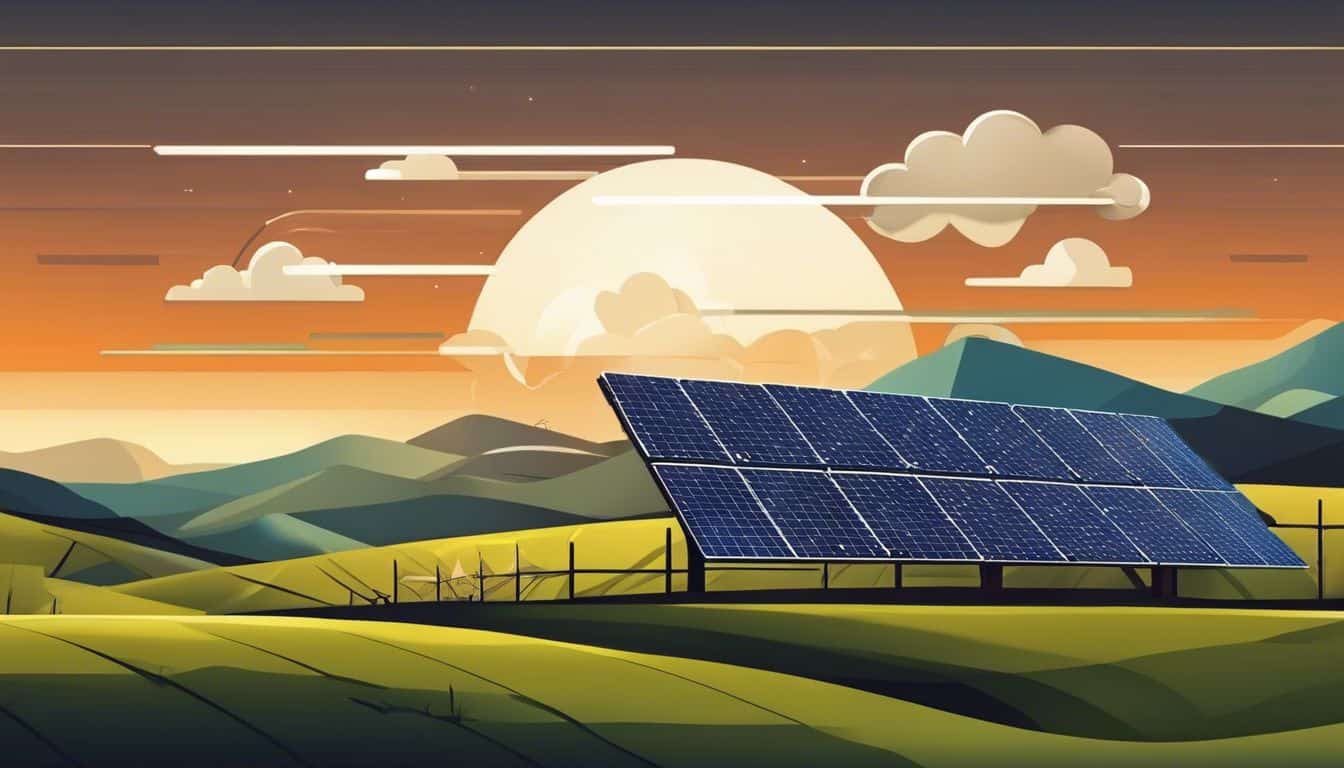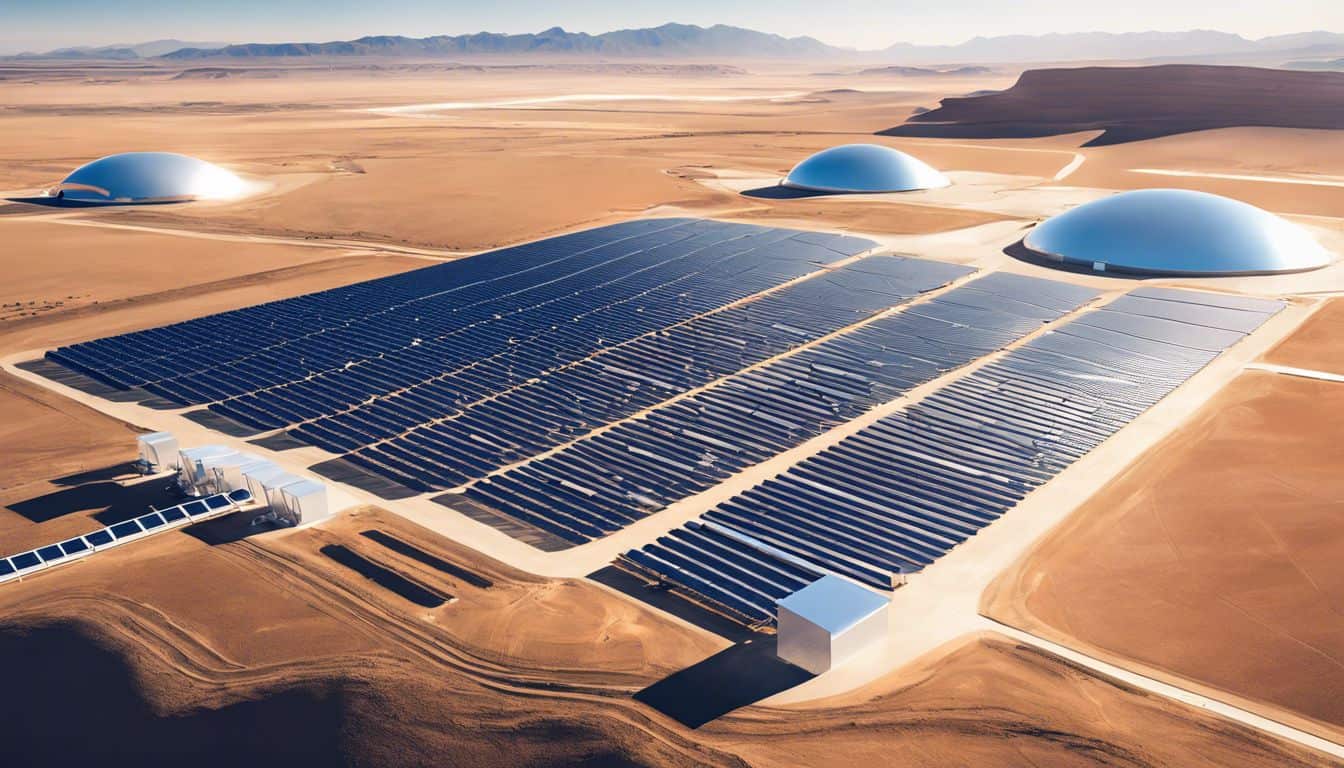Concentrating Solar Power (CSP) technology has emerged as a promising solution in the renewable energy landscape, offering the unique ability to provide dispatchable clean energy through thermal storage. However, the efficiency and longevity of CSP plants heavily depend on proper maintenance and operation practices. This guide explores the intricacies of CSP maintenance and operation, highlighting strategies to maximize plant performance and lifespan.
Types of CSP Systems and Their Maintenance Needs
CSP technology comes in various forms, each with its unique maintenance requirements:
- Parabolic Trough Systems: These systems use curved mirrors to focus sunlight onto a receiver tube. Regular cleaning of mirrors and inspection of heat transfer fluid (HTF) systems is crucial.
- Power Tower Systems: Featuring a field of heliostats focusing sunlight onto a central receiver, these systems require precise alignment maintenance and frequent cleaning of mirrors.
- Linear Fresnel Reflector Systems: Using flat or slightly curved mirrors, these systems need regular cleaning and alignment checks.
- Dish/Engine Systems: These standalone units require frequent mirror cleaning and engine maintenance.
Each system type presents unique challenges, but all share common maintenance needs such as mirror cleaning, fluid management, and component inspections.

Key Components Requiring Regular Maintenance
Effective CSP plant operation relies on the proper maintenance of several critical components:
- Solar Collectors: Regular cleaning and alignment checks of mirrors or heliostats are essential to maintain optimal solar energy capture.
- Heat Transfer Fluid Systems: Monitoring and maintaining the quality of HTF is crucial for efficient heat transfer and system longevity.
- Thermal Energy Storage Systems: Regular inspections and maintenance of storage tanks and associated equipment ensure reliable energy dispatch. For more information on storage solutions, check out our guide on concentrated solar power storage solutions.
- Power Block: Routine maintenance of turbines, generators, and associated equipment is vital for consistent electricity production.
Preventive Maintenance Strategies
Implementing robust preventive maintenance strategies is key to avoiding unexpected downtime and ensuring optimal plant performance:
- Scheduled Inspections and Cleaning: Regular cleaning of mirrors and receivers, along with systematic inspections of all components, helps maintain peak efficiency.
- Performance Monitoring and Data Analysis: Continuous monitoring of plant performance metrics allows for early detection of potential issues and optimization of operations.
- Predictive Maintenance: Utilizing advanced technologies like vibration analysis, thermography, and oil analysis can predict potential failures before they occur, allowing for proactive maintenance.
Innovative Maintenance Technologies
The CSP industry is embracing cutting-edge technologies to enhance maintenance practices:
- Robotic Cleaning Systems: Automated cleaning robots can efficiently clean large mirror fields, reducing water usage and labor costs.
- Drone-based Inspections: Unmanned aerial vehicles equipped with thermal cameras can quickly inspect large areas for defects or misalignments.
- Self-cleaning Electrodynamic Screens: These innovative screens can repel dust particles from mirror surfaces, reducing the frequency of manual cleaning.
For a deeper dive into the latest technological advancements, explore our concentrated solar power innovations guide.
Operation Management Systems
Modern CSP plants rely on sophisticated management systems to optimize performance:
- SCADA Systems: These systems provide real-time monitoring and control of plant operations, enabling operators to respond quickly to changing conditions.
- Performance Optimization Software: Advanced software tools can analyze plant data to suggest operational improvements and predict maintenance needs.
- Weather Forecasting Integration: Accurate weather predictions allow for better planning of plant operations and maintenance activities.
The integration of artificial intelligence and machine learning is revolutionizing CSP plant operations. Learn more about how AI is optimizing concentrated solar power operations.
Environmental Considerations in CSP Maintenance
CSP plants must balance operational efficiency with environmental responsibility:
- Water Usage: Implementing dry cooling systems and optimizing water recycling can significantly reduce water consumption in arid regions.
- Heat Transfer Fluid Management: Proper handling and disposal of HTFs are crucial to prevent environmental contamination.
- Wildlife Protection: Implementing measures to protect local wildlife, such as bird deterrent systems, is essential for responsible operation.
Cost Reduction Strategies in O&M
Effective cost management in CSP plant operation and maintenance involves:
- Automation and Remote Monitoring: Reducing on-site personnel requirements through automated systems and remote monitoring.
- Staff Training: Investing in comprehensive training programs to enhance the skills of maintenance personnel.
- Optimizing Spare Parts Inventory: Maintaining an optimal balance of spare parts to minimize downtime without excessive inventory costs.
Conclusion
Proper maintenance and operation are fundamental to the success of CSP technology. CSP plant operators can maximize efficiency, reduce costs, and extend plant lifespans by implementing comprehensive maintenance strategies, leveraging innovative technologies, and focusing on continuous improvement. As the industry continues to evolve, ongoing research and development in CSP O&M practices will play a crucial role in enhancing the competitiveness and sustainability of this promising renewable energy technology.
FAQs
What are some of the main technical challenges faced by Concentrated Solar Power (CSP) systems?
CSP systems can encounter several significant hurdles due to the variable nature of sunlight:
- Fluctuations in solar radiation caused by weather patterns, clouds, and seasonal changes can impact the system’s efficiency
- Dust and debris accumulation on the mirrors can reduce their reflectivity and overall performance
- Interruptions in the electrical grid can disrupt the power generation process and cause system downtime
- These challenges require innovative solutions to ensure the smooth and reliable operation of CSP plants
How can thermal energy storage (TES) help address the intermittency issues in CSP?
Thermal energy storage (TES) is a key technology for overcoming the variability of solar energy in CSP systems:
- TES allows excess heat to be stored during periods of high solar radiation, such as midday
- This stored thermal energy can then be used to generate electricity during times of low sunlight or peak demand, such as evening hours
- By decoupling the collection of solar energy from the generation of electricity, TES enables CSP plants to provide a more stable and dispatchable power supply
- Molten salt is a common medium used in TES systems due to its high heat capacity and thermal stability
What role does hybridization play in improving the reliability of CSP plants?
Hybridizing CSP with conventional fossil fuel systems can enhance the overall reliability and flexibility of the power plant:
- In a hybrid setup, a fossil fuel, such as natural gas, can be used to supplement the solar energy when needed
- This allows the CSP plant to maintain a consistent output even during periods of low solar radiation or high electricity demand
- Hybridization can also help reduce the cost of CSP by sharing infrastructure and increasing the plant’s capacity factor
- However, it’s important to minimize the use of fossil fuels to maintain the environmental benefits of CSP
How can proactive monitoring and maintenance improve CSP system performance?
Implementing a proactive approach to monitoring and maintenance is crucial for optimizing the efficiency and longevity of CSP systems:
- Installing sensors throughout the plant can help detect potential issues early, allowing for timely interventions
- Regular drone inspections can identify problems with the mirrors, receivers, and other components without disrupting operations
- Conducting daily reviews of energy production and performance data can reveal trends and anomalies that may indicate developing issues
- Establishing a system for quick reporting and response to problems can prevent minor issues from escalating into major failures
What advancements in materials science can enhance the durability of CSP components?
Ongoing research and development in materials science offer promising solutions for improving the durability of CSP systems:
- Using advanced materials that can withstand high temperatures and thermal cycling can extend the lifespan of receivers, heat exchangers, and other critical components
- Coatings and surface treatments that resist corrosion and oxidation can help protect equipment from the harsh operating conditions in CSP plants
- Developing more durable and reflective mirror materials can maintain the efficiency of the solar field over time, reducing the need for frequent replacements
- By investing in these material advancements, CSP plants can reduce maintenance costs and improve their long-term performance











Leave a Reply